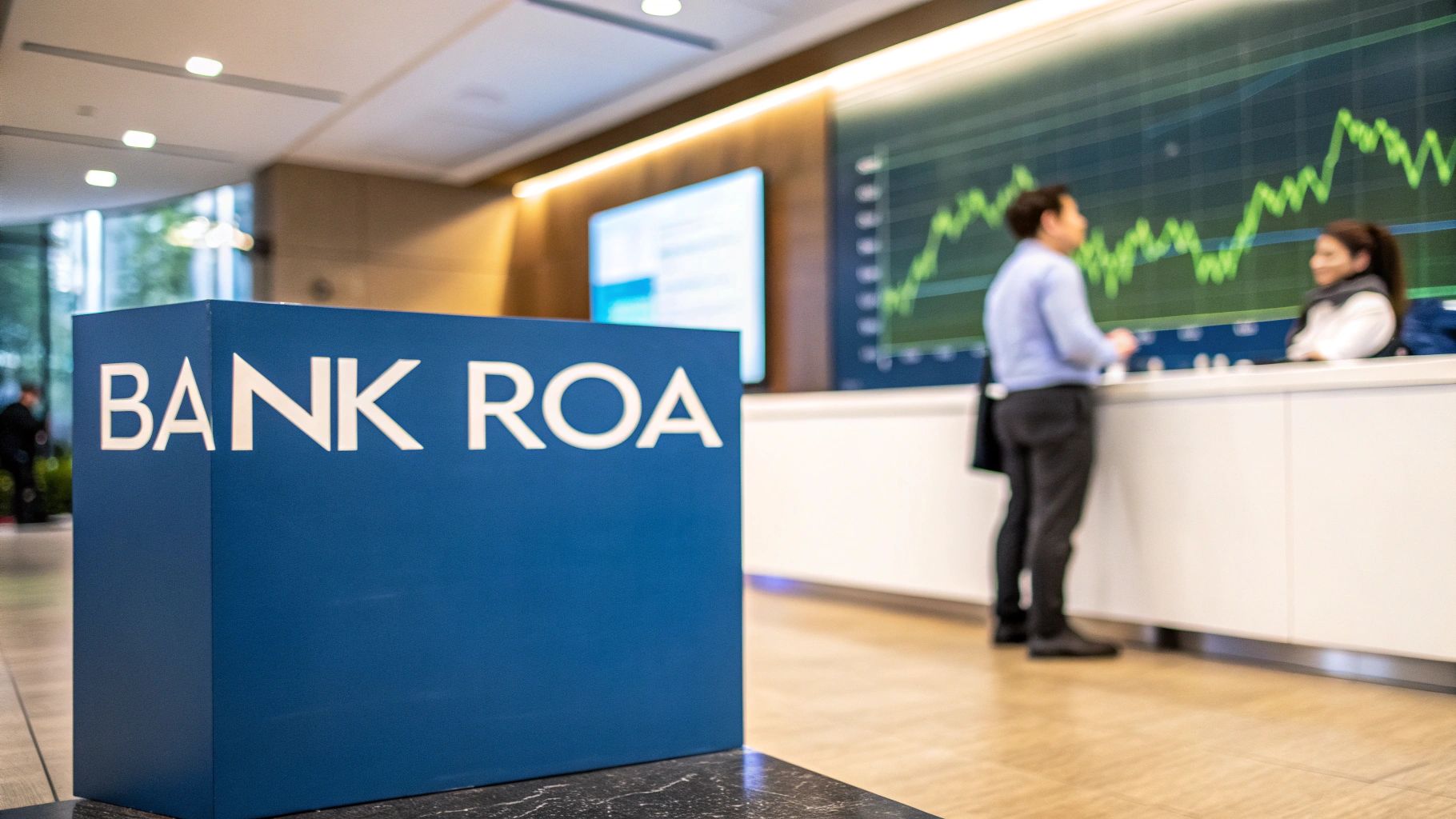← Back to News
Understanding the Return on Assets (ROA) and Return on Equity (ROE) in Banking
Banking Knowledge Base4/6/2025Banking Knowledge BaseReturn on Assets (ROA)Return on Equity (ROE)

Return on Assets (ROA) and Return on Equity (ROE)
Return on Assets (ROA) and Return on Equity (ROE) are critical financial metrics in banking, providing insights into profitability and shareholder value. Understanding these ratios helps stakeholders assess a bank's performance and make informed investment decisions. This guide explores the significance of ROA and ROE, their differences, and how they can be improved.Table of Contents
What Is ROA in Banking?
Return on Assets (ROA) is a financial metric that measures a bank's ability to generate profit from its assets. It is calculated by dividing net income by total assets. ROA provides insights into how efficiently a bank is utilizing its assets to produce earnings. A higher ROA indicates better asset utilization and operational efficiency, making it a key indicator of a bank's profitability and management effectiveness. https://visbanking.com/contact/Why It Matters for Profitability Analysis
ROA is crucial for profitability analysis as it reflects the bank's ability to convert its asset base into net income. Investors and analysts use ROA to compare the performance of banks with different asset sizes, providing a standardized measure of profitability. A consistent or improving ROA suggests effective asset management and cost control, enhancing investor confidence and attracting potential investments.How ROE Reflects Shareholder Value
Return on Equity (ROE) measures a bank's ability to generate profit from shareholders' equity. It is calculated by dividing net income by shareholders' equity. ROE indicates how effectively a bank is using its equity base to generate returns for shareholders. A higher ROE signifies greater profitability and efficient use of equity, making it an important metric for assessing shareholder value and investment attractiveness.ROA vs ROE: What’s the Difference?
While both ROA and ROE are profitability metrics, they focus on different aspects of a bank's financial performance. ROA measures how efficiently a bank uses its assets to generate income, while ROE assesses how effectively it uses shareholders' equity. ROA is more asset-focused, providing insights into operational efficiency, whereas ROE is equity-focused, reflecting shareholder returns. Understanding both metrics is essential for a comprehensive analysis of a bank's financial health.What’s a Good ROA or ROE for a Bank?
A good ROA or ROE varies depending on the banking industry and economic conditions. Generally, a ROA of 1% or higher is considered strong, indicating efficient asset utilization. For ROE, a benchmark of 10-15% is often seen as favorable, reflecting effective equity management. However, these figures can fluctuate based on market dynamics, regulatory changes, and individual bank strategies. It's important to compare these metrics against industry averages and peer performance for a more accurate assessment.Real-Life Examples: Visbanking Data Breakdown
Visbanking provides comprehensive data on bank performance, offering insights into ROA and ROE across various institutions. By analyzing this data, stakeholders can identify trends, benchmark performance, and make informed decisions. For example, banks with consistently high ROA and ROE demonstrate strong management practices and financial stability, making them attractive investment opportunities. Visbanking's data breakdown allows for detailed comparisons and strategic planning.Improving Performance Through Efficiency
Enhancing ROA and ROE requires a focus on operational efficiency and strategic management. Banks can improve these metrics by optimizing asset utilization, reducing costs, and enhancing revenue streams. Implementing technology-driven solutions, streamlining processes, and focusing on customer-centric strategies can drive profitability and shareholder value. Continuous performance monitoring and adaptive strategies are key to maintaining competitive advantage and achieving financial goals.FAQs on ROA and ROE
Is a higher ROA always better for banks?
While a higher ROA indicates efficient asset use, it should be balanced with risk management and sustainable growth strategies to ensure long-term stability.What affects ROE in financial institutions?
ROE is influenced by factors such as net income, equity levels, leverage, and operational efficiency. Effective management of these elements can enhance ROE.What’s the average ROE for US banks?
The average ROE for US banks varies, but it typically ranges between 10-15%, depending on economic conditions and industry trends.Similar Articles

Brian's Banking Blog
Return on Assets for Banks: A Guide for Executive Decision-Making

Brian's Banking Blog
Mastering Return on Equity: A Strategic Guide for Bank Executives

Brian's Banking Blog
Optimizing Net Interest Income for Bank Profitability

Brian's Banking Blog
A Guide to Performance Measurement Systems for Bank Executives

Brian's Banking Blog
Mastering Banking Performance Metrics: A Guide for Executives

Brian's Banking Blog
A New Playbook for the Modern Bank Audit

Brian's Banking Blog
Mastering the Non Performing Loans Ratio for Strategic Advantage

Brian's Banking Blog
A Guide to Capital Ratios for Banks: Beyond Compliance to Strategic Advantage

Brian's Banking Blog
Mastering The Banking Efficiency Ratio: A Guide for Bank Executives

Brian's Banking Blog